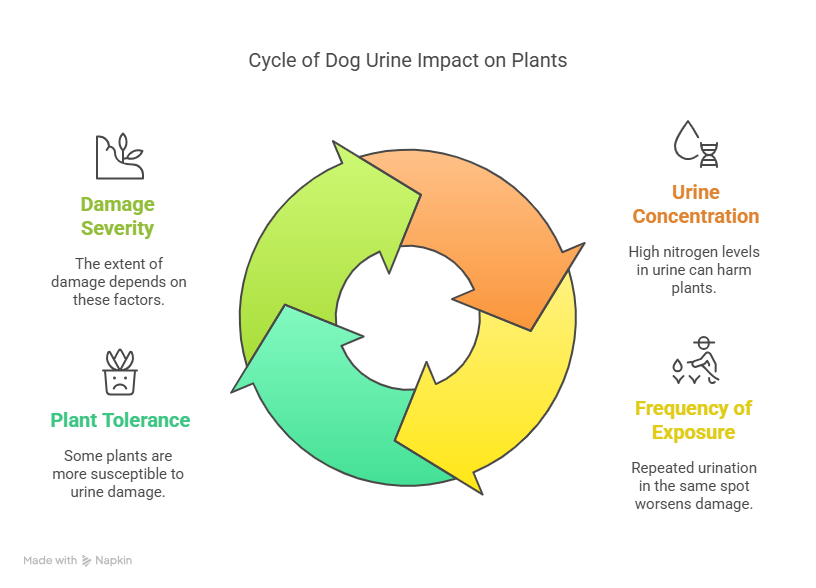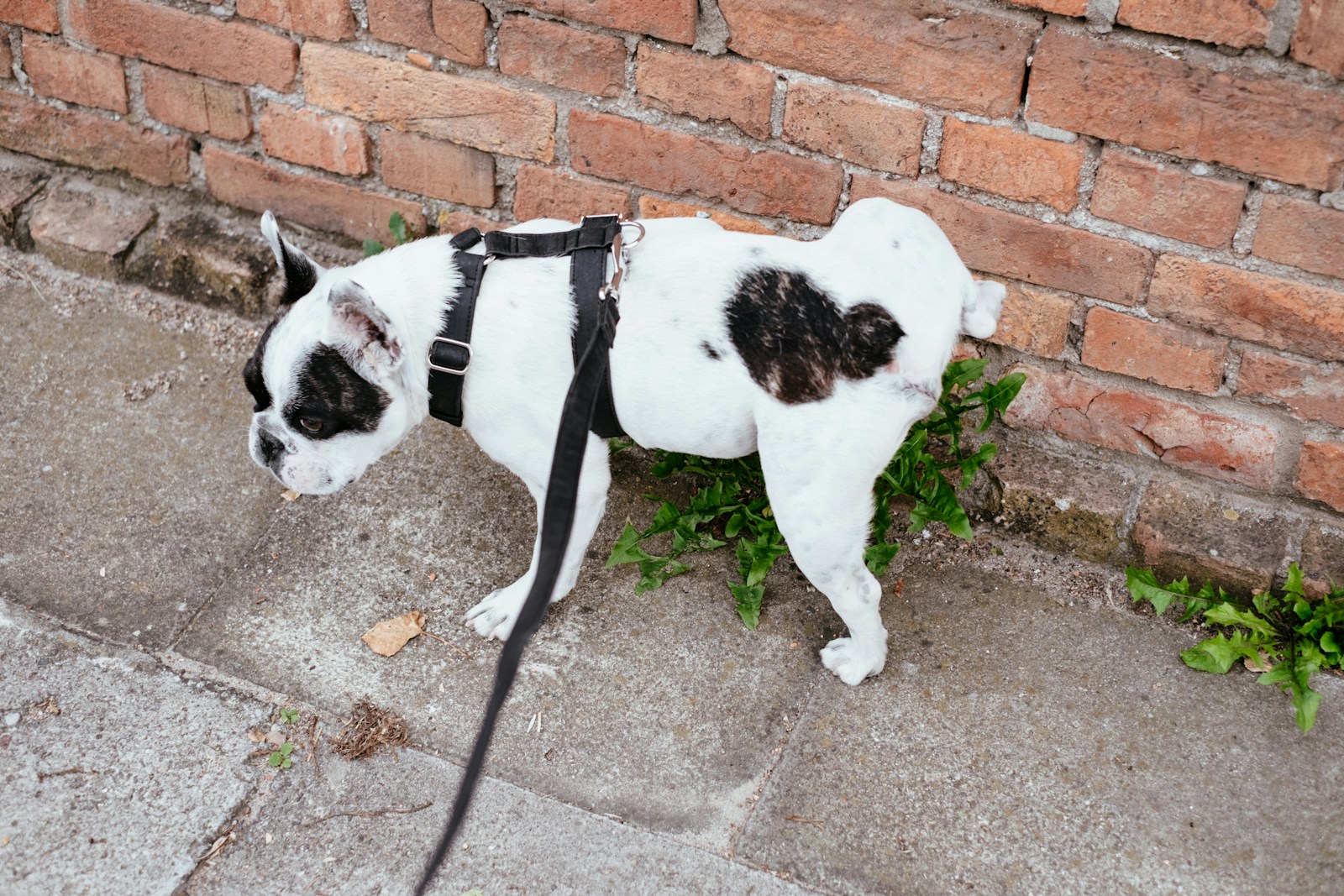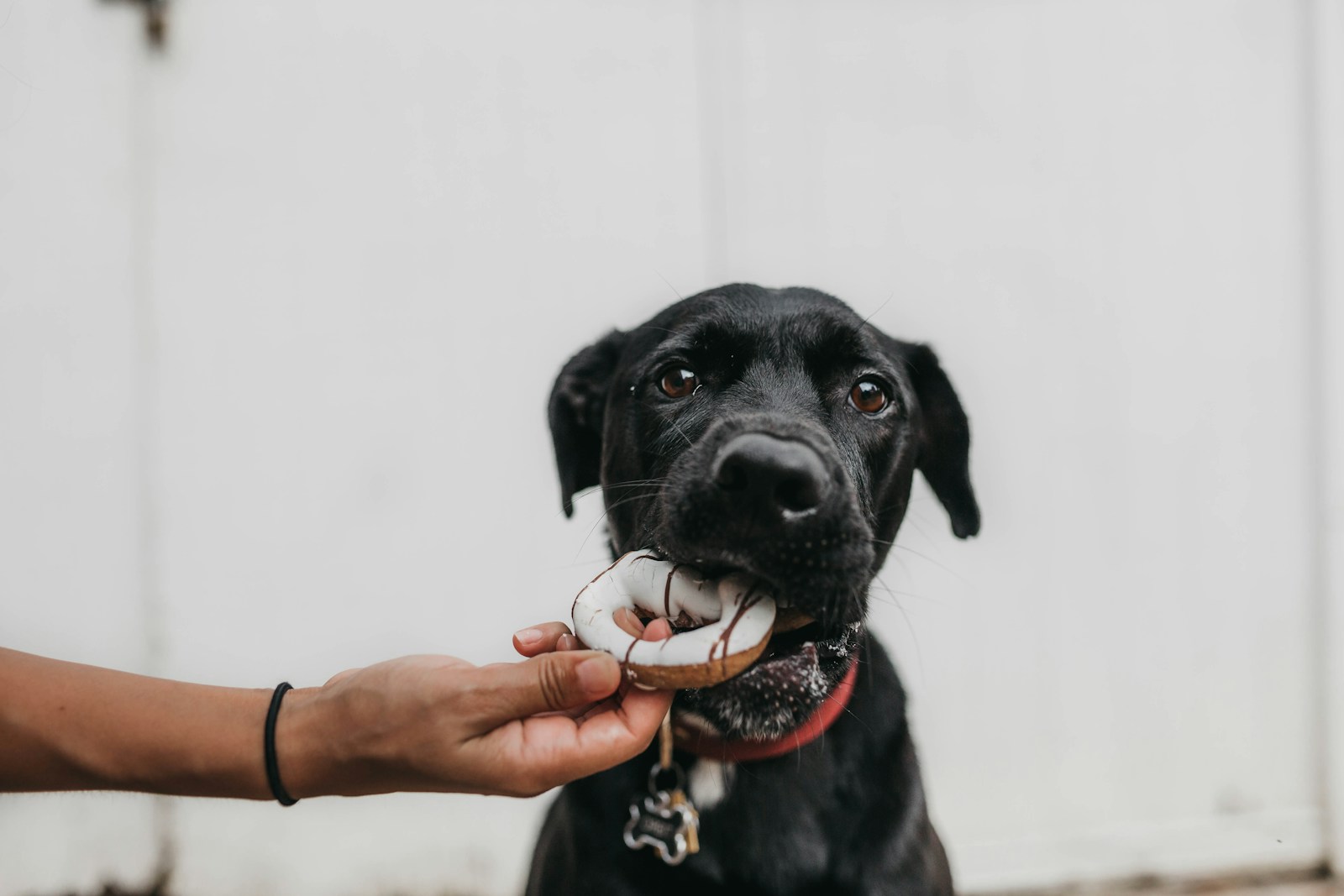Gardening is a labor of love for many, and the sight of a lush, thriving garden can be incredibly rewarding. However, for pet owners, a common concern is the impact of their furry friends on their garden’s health.
One of the most pressing issues is the effect of dog urine on plants. It’s a worry that can leave many gardeners scratching their heads, wondering if their beloved pets are inadvertently harming their garden. Will Dog Pee Kill Plants
The truth is, dog urine can indeed be harmful to plants, but there are natural ways to mitigate the damage and protect your garden. In this article, we’ll explore the effects of dog urine on plants and provide practical tips on how to safeguard your garden.
Understanding How Dog Urine Affects Plants
Understanding the effects of dog urine on plants is crucial for maintaining a healthy garden. Dog urine can significantly impact the health and appearance of plants, and being aware of this impact is the first step towards mitigating any potential damage.
The Science Behind Dog Pee and Plant Damage
Dog urine contains high levels of nitrogen, which can be harmful to plants in large quantities. When dog urine comes into contact with the soil, it can cause an overabundance of nitrogen, leading to damage to the roots and potentially killing the plant. This process can also lead to a condition known as “fertilizer burn,” where the high nitrogen content scorches the plant’s roots.
Which Plants Are Most Vulnerable to Dog Urine
Some plants are more susceptible to damage from dog urine than others. Delicate plants and those with shallow root systems are often the most vulnerable. For example, plants like impatiens and petunias can be particularly sensitive to the high nitrogen levels found in dog urine.
| Plant Type | Sensitivity to Dog Urine | Reason |
|---|---|---|
| Impatiens | High | Shallow roots, sensitive to nitrogen |
| Petunias | High | High nitrogen sensitivity |
| Succulents | Low | Deep roots, adapted to high salt/nitrogen |
Signs Your Plants Are Suffering from Urine Damage
Identifying the signs of urine damage is crucial for taking corrective action. Common signs include yellowing or browning of the leaves, wilting, and in severe cases, the death of the plant. If you notice these symptoms, it’s essential to consider whether dog urine might be the cause.
Will Dog Pee Kill Plants? The Truth About Canine Urine
Understanding the truth about dog pee and its impact on plants can help you protect your garden. Dog urine can indeed harm plants, but the extent of the damage depends on several factors. The concentration of the urine, the frequency of exposure, and the type of plants in your garden all play a role in determining the severity of the damage.
Factors That Determine Plant Damage Severity
The severity of plant damage caused by dog urine is influenced by several factors. These include the concentration of nitrogen and other salts in the urine, the frequency of urination on the same spot, and the plant’s tolerance to urine.
Nitrogen concentration is a key factor, as high levels can be particularly harmful to plants. Frequent exposure to dog urine can also exacerbate the damage.
Myths vs. Facts About Dog Urine and Plants
There’s a common myth that dog urine is beneficial for plants due to its nitrogen content. However, the truth is that while nitrogen is a necessary nutrient, excessive amounts can be detrimental.
| Myth | Fact |
|---|---|
| Dog urine is good for plants. | Excessive dog urine can harm plants due to high nitrogen levels. |
| All dogs cause equal damage. | Female dogs may cause more damage due to their urination habits. |
Why Female Dogs May Cause More Damage
Female dogs tend to urinate in one spot for longer periods, which can increase the concentration of urine on plants, leading to more severe damage.

Natural Methods to Protect Your Garden from Dog Urine
Gardeners can enjoy a lush, thriving outdoor space even with dogs by using natural methods to mitigate urine’s negative effects. Implementing these strategies not only protects your garden but also creates a harmonious environment for both your plants and pets.
Creating Designated Bathroom Areas for Your Dog
One effective way to minimize urine damage is by designating a specific area for your dog to urinate. This could be a gravel or mulch area that is less likely to be damaged by dog urine.
Dog-Resistant Plants for Your Garden
Choosing plants that are more resistant to dog urine can be a practical solution. Some plants are naturally more tolerant to the high nitrogen content in dog urine.
Natural Soil Amendments and Remedies
Using natural soil amendments can help counteract the negative effects of dog urine.
Dilution Techniques
Diluting dog urine with water can reduce its nitrogen concentration, minimizing damage. Watering the affected area thoroughly after your dog urinates can help.
Homemade Repellent Sprays
Creating homemade repellent sprays using natural ingredients can deter dogs from urinating on certain plants.
Training Techniques to Keep Dogs Away from Plants
Training your dog to avoid certain areas of the garden can be an effective long-term solution. Using positive reinforcement techniques can help.

Conclusion: Enjoying a Beautiful Garden with Your Canine Companion
Maintaining a lush garden with dogs around can be challenging, but with the right knowledge, it’s entirely possible. Understanding how dog urine affects plants is crucial to avoiding damage and keeping your garden thriving. By implementing natural protection methods, you can enjoy a beautiful outdoor space with your canine companion.
Creating designated bathroom areas for your dog, choosing dog-resistant plants, and using natural soil amendments are effective ways to avoid dog pee damage to plants. Training your dog to stay away from certain plants also helps in maintaining plants with dogs around. With these simple and practical tips, you can protect your garden and ensure it remains a haven for both you and your dog.





